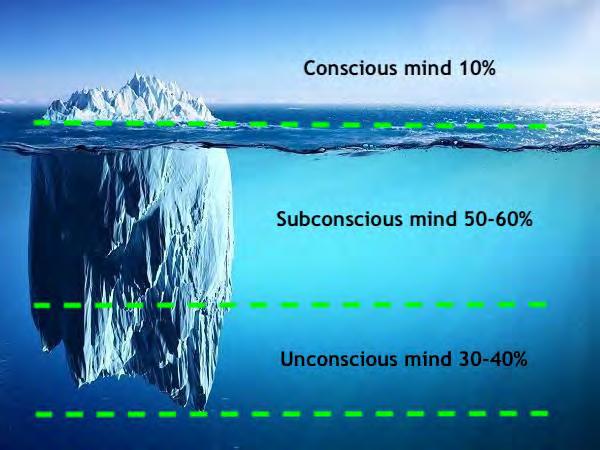
4 minute read
NET - THE NEURO-EMOTIONAL TECHNIQUE
AND HOW TO REDUCE STRESS IN 2 MINUTES
Fiona Lam is an experienced Melbourne-based naturopath with a special interest in supporting patients with stress-related disorders and mental health. Fiona has over 10 years of clinical experience and is also a certified Neuro-Emotional Technique (NET) practitioner.
Advertisement
Fiona’s practice has a focus on providing effective physical, mental and emotional support for teenage patients suffering from mood disorders. Fiona’s passion is to continue providing both professional and practical strategies to help adolescents manage their stress, which led her to develop Wander Base, a 7-Step program for building resilience and self-confidence for teenage girls.
Avery well renowned peer of a practitioner-only herbal company asked if I would present a lecture on teenage health as part of their webinar series. Although this was an honour and actually one of my topics of strength, my mind immediately went into overdrive with questions of self-doubt – “When is it due?”, “Do I have enough time to put this together?”, “Am I good enough to lecture to other practitioners?” I began to feel the natural reactions of anxiety and panic - sweaty palms, a familiar knot forming in my stomach while bombarding her with questions.
Why can’t I stop worrying?
Even though this reaction may have seemed a little dramatic, stress is irrational a lot of the time. This is because there are actually three minds involved which rarely cooperate with one another. As a result, this incongruence between the minds manifests into physical, mental and behavioural problems.
The THREE Minds
CONSCIOUS MIND: THE TIP OF THE ICEBERG
The conscious mind is where rationalisation comes from, it is our thinking mind. It is the part of the mind that helps us find reason and logic, especially during high pressure or stressful situations.
However, unfortunately the conscious mind only occupies about 10% of the mind... which explains why it lacks control over how we behave or feel, making it difficult to listen to that voice of reasoning.

SUBCONSCIOUS MIND: SUBMERGED UNDERWATER
The subconscious, on the other hand, makes up 50-60% of the mind. The subconscious is like a storage room that keeps all your memories based on your experiences, what you’ve learnt and like an overtired child that’s had too much red cordial...it is EMOTIONAL, therefore lacking rationalisation.
During certain stressful situations or events, we may feel we are incapable of being good enough. It may trigger an unpleasant memory or situation you have previously been in.
UNCONSCIOUS MIND: WHAT LIES DEEP BELOW

Lastly, the remaining 30-40% consists of the unconscious mind, which has an important role in our survival and causes a physiological change in our bodies when it is activated by a perceived threat.
In many cases, these type of situations are enough to trigger the fight or flight response- sweaty hands, the knot in your stomach, increased heart rate and muscle tension.
A Scientifically-Validated Way to Reduce Stress
Sometimes these overwhelming feelings and body tension are so strong, you think they will never pass. It is important in these moments to implement various habits into your daily routine to manage stress levels. This is where Neuro-Emotional Technique (NET) sessions can be extremely beneficial.
NET works by making the three minds congruent by identifying and resolving underlying problems that may keep getting retriggered. This in turn allows healthy mind and body functions to take place.
NET is a process which the practitioner uses a manual muscle test as a tool to help identify associated involuntary physiological responses to particular stimuli (both physical and verbal). Through this process, the practitioner may be able to find unresolved trauma and stored patterns of stress that can interrupt the body’s natural ability to heal. Once these patterns are found, NET works on changing how an individual may react and respond to these unresolved past events and helping the mind and body connect, allowing for restoration.
As a certified NET practitioner, I have experienced incredible results from NET through my personal and clinical experience, but now there is quantifiable evidence as to ‘why’ patients feel better with this mind-body stress release technique.
In a recent study titled Neuro Emotional Technique Effects On Brain Physiology In Cancer Patients With Traumatic Symptoms, there is evidence clearly demonstrating dramatic pre and post changes on MRI brain images for patients who received NET.
You can learn more about the study and watch the documentary detailing the science behind NET called ‘Stressed’ at https://www.netmindbody.com/
How To Reduce Stress In 2 Minutes
Feeling calmer after NET can be quite immediate, but other behaviours and techniques outside of that which may also be helpful is the First Aid Stress Tool (FAST) which integrates the concepts of NET to improve the stress response and offer immediate relief.

By Fiona Lam Practice Details






